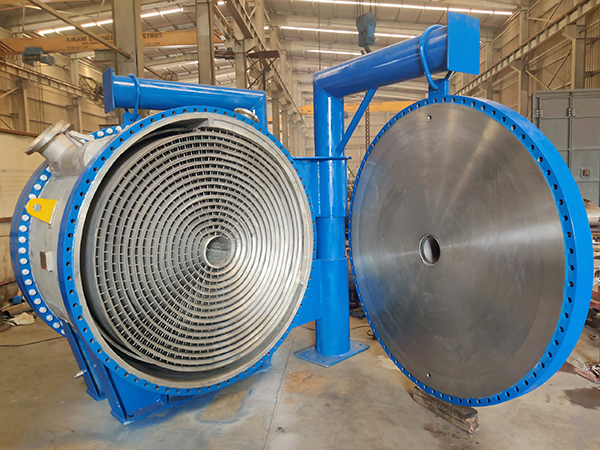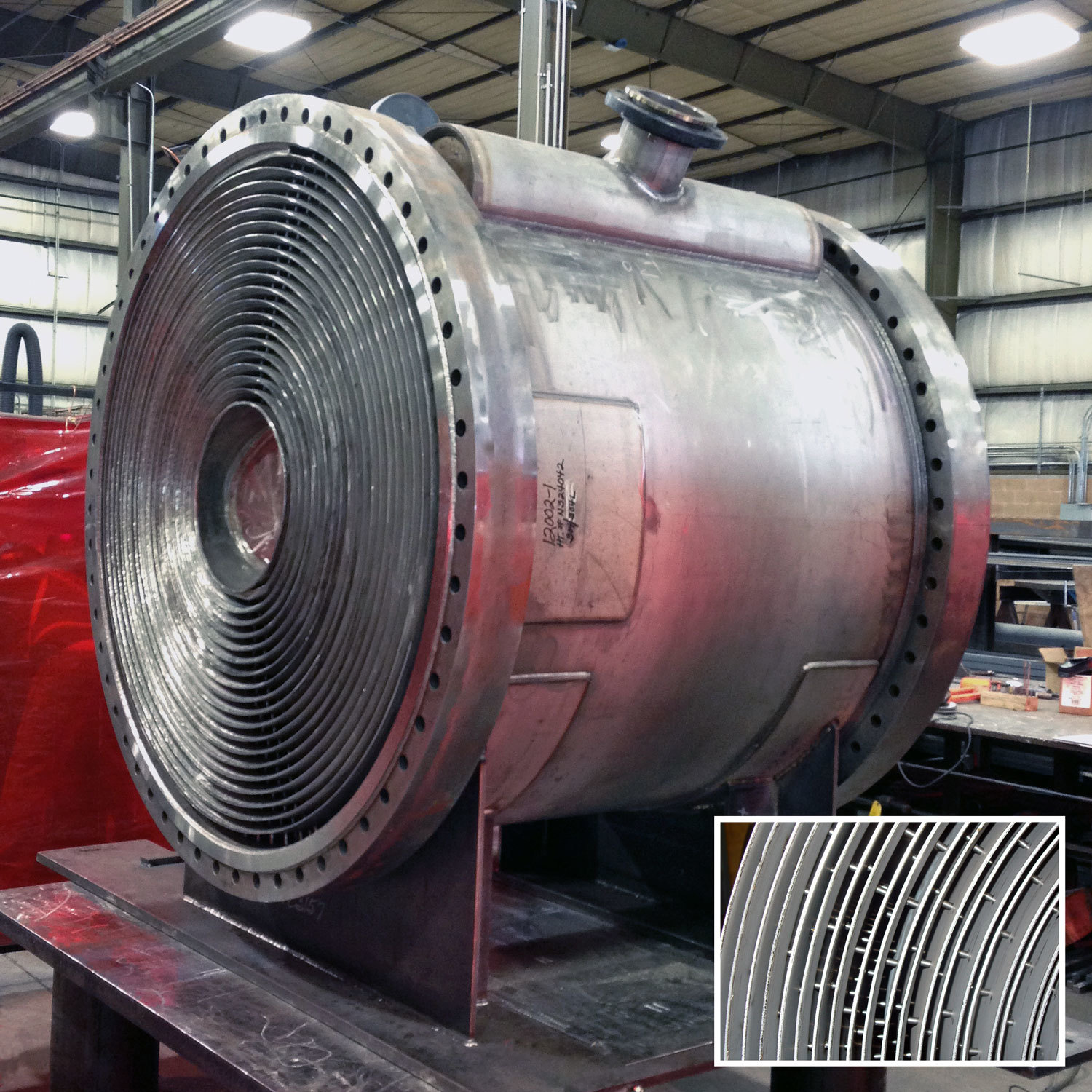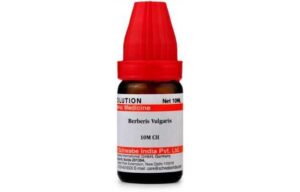
In artificial heat transfer operations, one of the most patient challenges masterminds face is fouling — the unwanted accumulation of deposits similar as scale, sludge, or natural growth on heat transfer shells. Fouling diminishments effectiveness, increases conservation costs, and can indeed dock outfit lifetime. To combat this, numerous diligence have turned to spiral heat exchangers, which are famed for their exceptional fouling resistance, compact design, and harmonious thermal performance. Unlike conventional shell- and- tube or plate exchangers, spiral designs are uniquely finagled to handle dirty, thick, or flyspeck- laden fluids without significant performance loss.
This composition explains how spiral heat exchangers are designed to repel fouling, why they outperform traditional designs, and where they give the most value in artificial operations.
Understanding Fouling and Its Impact on Heat Exchangers
Before diving into how spiral heat exchangers combat fouling, it’s important to understand what fouling is and why it’s such a problem. Fouling occurs when unwanted accoutrements similar as mineral scale, erosion products, natural growth, or solid patches — deposit on heat transfer shells. These deposits act as an separating subcaste, impeding heat transfer and adding energy consumption.
Over time, fouling can lead to
- Reduced heat transfer effectiveness
- Increased pressure drop
- Advanced functional and drawing costs
- Frequent shutdowns for conservation
- Implicit outfit failure
In some diligence, similar as wastewater treatment or pulp and paper manufacturing, fouling is nearly ineluctable due to the nature of the process fluids. That’s why the design of the heat exchanger plays a pivotal part in minimizing its goods.

The Innovative Design of spiral Heat Exchangers
Spiral heat exchangers are erected else from conventional designs. rather of using straight tubes or piled plates, they feature two long essence wastes wound around a central core, forming two nonstop spiral channels. These channels are fully separated by the essence wall, which facilitates heat transfer between the fluids while precluding mixing.
Each channel is designed to handle one of the process streams — generally one for the hot fluid and one for the cold fluid. The fluids can flow in custom( contrary directions) orco-current( same direction) configurations, depending on the operation conditions. The spiral path ensures both fluids maintain nonstop contact with the heat transfer face, promoting livery heating or cooling and effective energy recovery.
But beyond effective heat transfer, this spiral configuration provides a major advantage superior fouling resistance.
How Spiral Heat Exchangers repel Fouling
The unique figure of spiral heat exchangers offers multiple mechanisms that minimize fouling buildup and extend functional uptime. Let’s break down the crucial factors that make them so effective.
1. Single- Channel Flow Design
Unlike shell- and- tube exchangers, which have multiple resemblant tubes or channels where inflow distribution can be uneven, spiral heat exchangers feature a single nonstop channel for each fluid. This design eliminates dead zones and low- haste regions where patches tend to settle and deposits accumulate.
Because each fluid follows a single, nonstop spiral path, any inflow dislocations are tone- correcting. The constant movement ensures that the entire face is exposed to flowing fluid, minimizing stagnant areas where fouling could begin.
2. High Shear Forces and Self- Cleaning Effect
One of the most significant advantages of spiral heat exchangers is their tone- drawing effect. As the fluids move through the narrow spiral channels, the curve and pressure discriminational induce high shear forces along the walls. These forces produce turbulence, indeed at fairly low inflow rates, which helps dislodge or help the buildup of fouling accoutrements .
When a deposit starts to form, it slightly narrows the channel, which increases the original haste and shear stress. This natural ” tone- conforming ” medium causes the fouling to be trolled down by the fluid inflow itself. The result is a tone- cleaning process that drastically reduces conservation frequence and ensures stable thermal performance over time.
3. Counter-Current Flow for Uniform Temperature Distribution
utmost spiral heat exchangers operate in a custom configuration, where the hot and cold fluids move in contrary directions. This setup maintains a nearly invariant temperature difference across the entire exchanger, precluding localized hotspots or cold zones.
Why does this matter for fouling? Uneven temperature distribution can accelerate fouling, especially in systems prone to crystallization or thermal declination. By icing harmonious temperature slants, spiral heat exchangers minimize the conditions that promote fouling or scaling.
4. Compact Design Reduces Dead Volume
The compact and tightly wound structure of spiral heat exchangers means there’s minimum unused volume inside the unit. The nonstop curve ensures that all fluid areas contribute to effective heat transfer, and there are no large depressions where remainders can collect. This not only improves thermal effectiveness but also helps maintain cleaner shells throughout operation.
5. Easy Cleaning and conservation
While spiral heat exchangers are designed to repel fouling, they’re also easy to clean when conservation is needed. Each channel can be penetrated by removing the end covers, allowing for straightforward mechanical or chemical cleaning. The simple figure and openable design make it far easier to check and maintain compared tomulti-tube or plate systems that bear full disassembly.
operations Where Fouling Resistance Is Critical
The superior fouling resistance of spiral heat exchangers makes them particularly precious in diligence dealing with dirty or thick fluids, slurries, or sharp media. Common operations include
- Wastewater treatment Effective in handling sludge, backwaters, and high-solid- content fluids.
- Pulp and paper assiduity Used to recover heat from stringy and polluted process aqueducts.
- Chemical and petrochemical shops Ideal for processes involving thick fluids or fluids that tend to solidify.
- Food and libation Efficiently handle sticky or thick liquids like bathos, gravies, and dairy products.
- Energy recovery systems Reclaim waste heat from fouling-prone exhaust or process aqueducts.
In these surroundings, the trustability and tone- drawing parcels of spiral heat exchangers restate into smaller shutdowns, lower conservation costs, and bettered functional effectiveness.
Advantages Beyond Fouling Resistance
While fouling resistance is one of their name features, spiral heat exchangers also offer several fresh benefits
- High thermal effectiveness The counterflow design ensures maximum temperature recovery and energy application.
- Compact size Ideal for space- constrained installations, furnishing high performance in a small footmark.
- Continuity Constructed from erosion- resistant accoutrements like pristine sword or titanium, spiral heat exchangers can handle aggressive fluids and high- pressure conditions.
- Reduced functional costs Lower conservation frequence and cleaning conditions lead to significant savings over the outfit’s lifetime.
Partner with Kinetic Engineering for High- Performance Heat Exchangers
When it comes to dependable and effective thermal operation, Kinetic Engineering stands as a trusted leader in the design and manufacturing of advanced heat exchanger systems. With decades of moxie, the company delivers innovative results acclimatized to different artificial requirements — from compact spiral heat exchangers to robust air- cooled and double- pipe models. Each product is finagled with perfection and erected for continuity, icing maximum heat transfer effectiveness, superior fouling resistance, and long- term performance. By combining slice- edge technology with proven engineering excellence, Kinetic Engineering helps diligence optimize their thermal systems while reducing time-out and functional costs.
Conclusion
Fouling is one of the most expensive and frustrating problems in heat transfer systems, but spiral heat exchangers offer a practical and effective result. Their innovative single- channel design, tone- drawing medium, and high turbulence inflow make them exceptionally resistant to fouling — indeed in the harshest artificial conditions.
Whether you’re recycling sludge, thick liquids, or flyspeck- laden fluids, spiral heat exchangers maintain effectiveness, reduce conservation time-out, and deliver harmonious thermal performance. For diligence looking to ameliorate energy effectiveness and lower lifecycle costs, they represent a smart, forward- allowing investment.




